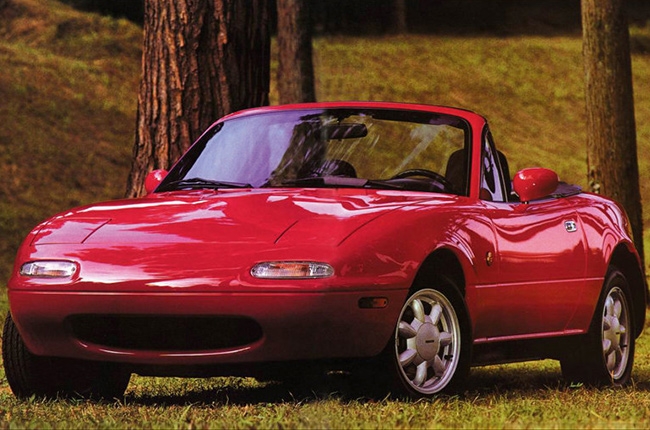
In ancient Japanese culture, mounted archery is depicted as a form of fighting style that requires the art of great concentration. A mounted archer must treat his horse as an extension of his being to achieve this level of “oneness” with his steed. This discipline is known as 'Jinba Ittai' – the full harmony between the rider and his horse.
Everything started in 1987, when the team responsible for the first generation MX-5, or the NA, used the Chinese characters for Jinba Ittai, or the oneness between car and driver, as their guiding principle in developing the car. This eventually became a design philosophy to characterize every Mazda vehicle produced since then.

The Jinba Ittai ancient form of riding mastery is what inspired Mazda to produce cars that directly connect with their drivers. It is part of Mazda’s human-centric philosophy with the goal of engineering cars that will behave accordingly with human sensations and provide a sense of balance. However, the application did not stop with sports cars like the Miata MX-5. Mazda began optimizing the handling, brakes, noise, vibration, and harshness on Japan's Mazda5 minivan.
The Jinba Ittai concept continues to evolve through extensive development and application throughout Mazda’s model range. The legacy of driving fun started in the MX-5 now enhances more models like the Mazda 2, Mazda3, and the Mazda6 and will continue to do so for future generations.

Mazda provides its vehicles with uniformity in terms of driving position and operation. Even the slightest of details, such as the proper positioning of the shift lever, is ensured to help the driver by minimizing muscle tension when changing gears.
The ideal driving position can easily be achieved in every Mazda vehicle. And this contributes to the Jinba Ittai experience that both driver and passenger can enjoy.

Aside from interior enhancements, Jinba Ittai is also about overall ride comfort for the driver and passengers. This requires in-depth study about vehicle behavior on the road and advanced suspension dynamics. This is where G-Vectoring Control comes in, a software that calculates the amount of engine torque while steering into a corner.
Basically, Jinba Ittai is the entire definition of a Mazda vehicle. It is the totality of the vehicle’s body, suspension, engine, engine sound, transmission, and interior elements. Mazda believes that with Jinba Ittai, every driver will enjoy the fun of driving to the fullest.
Latest Features
-
The 6 things every Ford Ranger must pass before it leaves the factory / Featured Article
Every Ford Ranger, from the base model to the Ranger Raptor, goes through a full inspection process before it leaves the factory. This includes six steps that make sure it’s ready to drive a...
-
Which GAC AION EV is best for your everyday lifestyle? / Featured Article
The GAC AION lineup has something for everyone, maybe you're after space, speed, or just a smooth city drive. Here's a quick breakdown of which model might work best for your day-to-day life...
-
The AutoDeal Awards 2024: Celebrating excellence in the auto Industry / Featured Article
The AutoDeal Awards 2024: Celebrating excellence in the auto Industry
Popular Articles
-
Cheapest cars under P700,000 in the Philippines
Jerome Tresvalles · Sep 02, 2024
-
First car or next car, the Ford EcoSport is a tough package to beat
Jun 18, 2021
-
Car Maintenance checklist and guide – here’s everything you need to know
Earl Lee · Jan 12, 2021
-
Most fuel efficient family cars in the Philippines
Bryan Aaron Rivera · Nov 27, 2020
-
2021 Geely Okavango — Everything you need to know
Joey Deriquito · Nov 19, 2020
-
Family cars in the Philippines with the biggest trunks
Sep 20, 2023
-
Head to head: Toyota Rush vs. Suzuki XL7
Joey Deriquito · Oct 28, 2020
-
Why oil changes are important for your car
Earl Lee · Nov 10, 2020
-
2021 Kia Stonic — What you need to know about it
Joey Deriquito · Oct 16, 2020
-
Top 7 tips for buying a used car in the Philippines
Joey Deriquito · Nov 26, 2020



